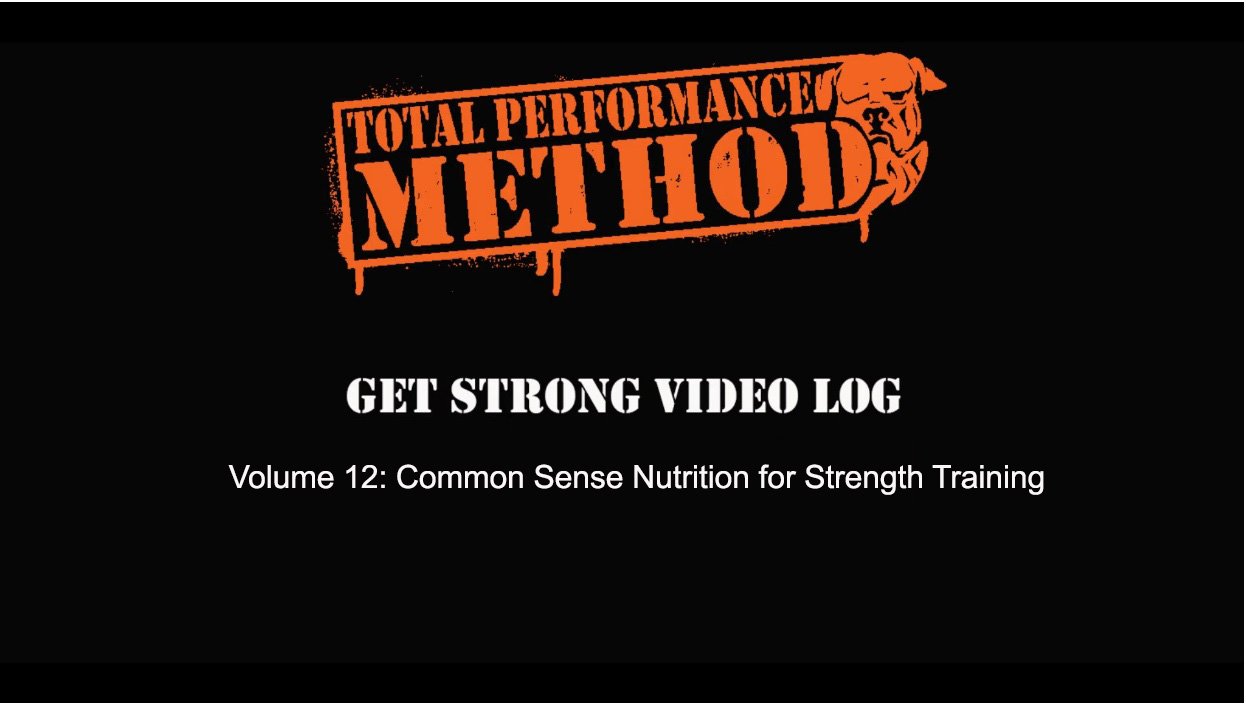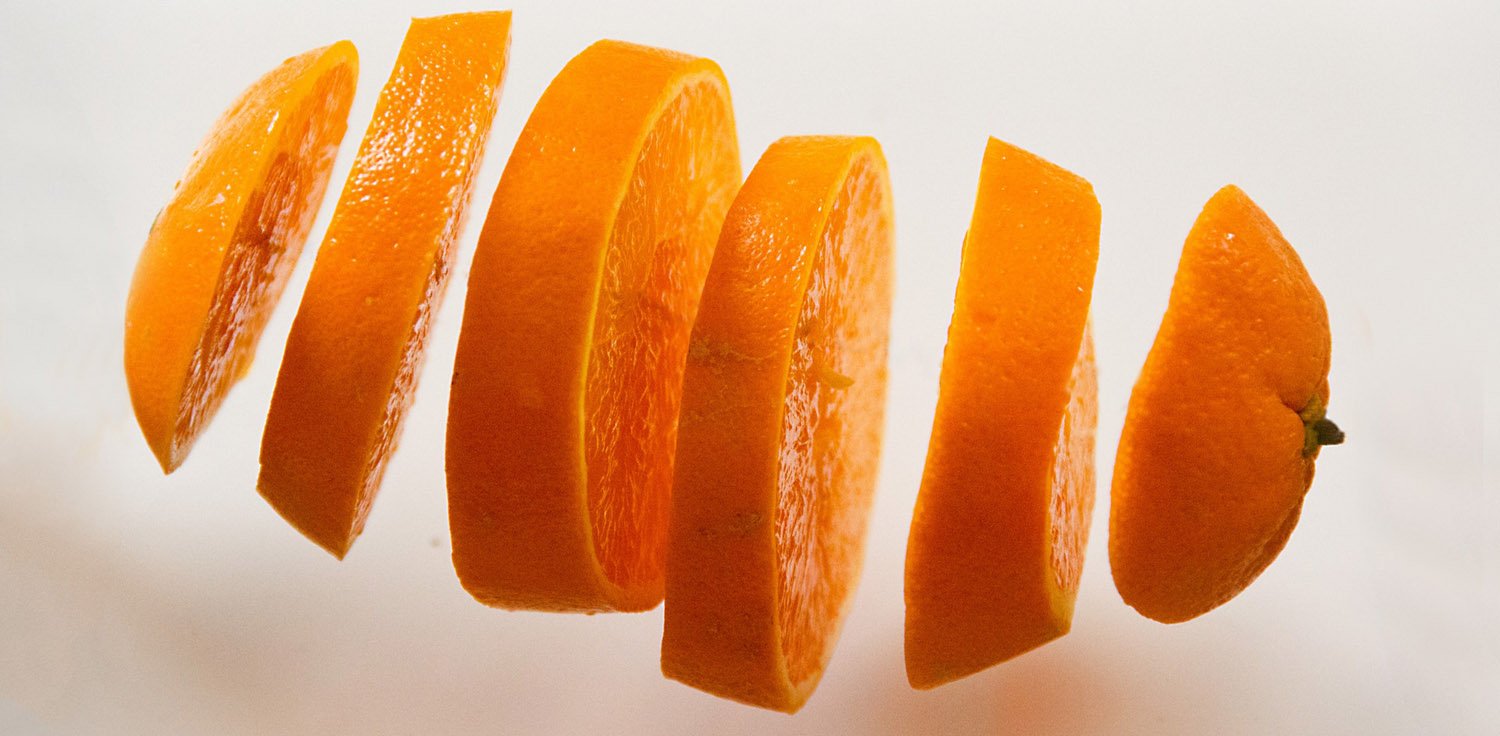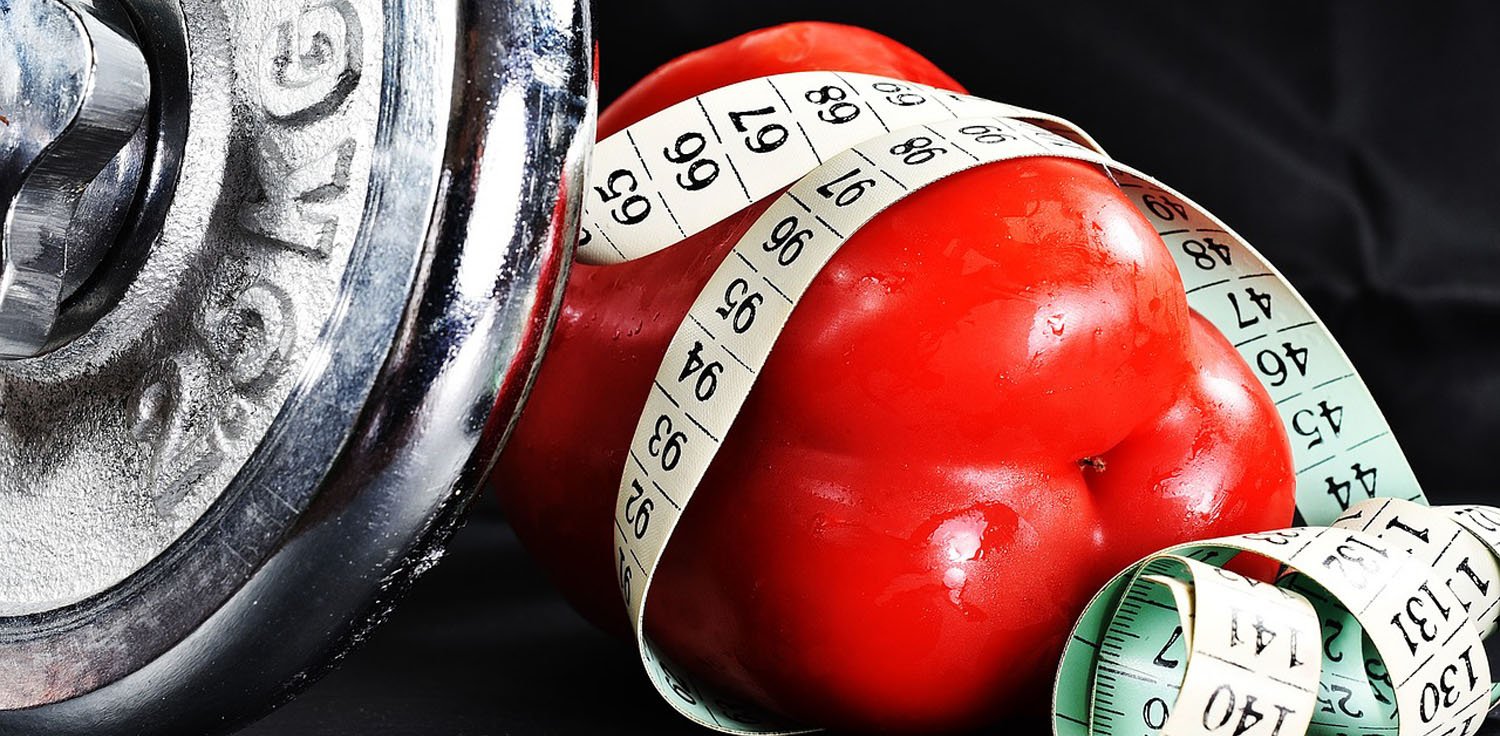By CJ Murphy MFS, C-ISSN
I’m writing this article after a weekend spent with some friends in the industry who I don’t get to see too much. As we were sitting around at dinner, the discussion was to extremes as it usually is. Extreme is an overused word these days, but it applies here. We were talking about the limits of what the human body can do and how to do it: Bodybuilding contest-prep dieting, developing maximum strength to peak for a powerlifting meet, and more.
This lead to even more discussion, because the majority of people who read our articles, and come to us for training are not interested in extremes. The vast majority of our clients are everyday people and this article is for them. This is for the people who want to lose body fat, gain an attainable amount of muscle, get strong and do it without giving up the rest of their lives. I know, it sounds like heresy, but it is truly what most of our clients want.
In this series, I’ll explain how to set up a healthy, easy-to-follow eating plan to lose body fat and gain muscle, and give you some very time-efficient training ideas to get you there.
What I’m going to cover is not cutting-edge, it’s not going to get you to 3% body fat or get you a 900-pound bench. It is a tried and true method of lowering your body fat and getting you stronger while having more energy. Most importantly it is something anyone can do, safely.
It’s Not Just Weight Loss
Before we get into the details, let’s go over a few things: first, it is important that you know there is a difference between weight loss and a change in body composition. Your body is comprised of two things, lean body mass (LBM) which is muscle, bones, skin and organs. LBM or muscle is metabolically active, which means it burns calories just sitting around. The higher your LBM, the more calories your body burns at rest and during activity.
Body fat is not metabolically active and in excess it is unhealthy. What we are looking to achieve is a healthy level of body fat, which is different for many people. A general guideline is 12-15% for men and 18-23% for women. These are just guideline numbers. Healthy for you might be a little higher or lower depending on age and body type. Just know, we want to get you to something attainable and maintainable in a reasonable amount of time.
Another thing to keep in mind is that we are changing body composition, so the scale will not tell the whole truth. Let’s say that you weigh 200 pounds at 20% body fat when you start. If after 8 weeks you have lost 10 pounds of fat and gained 5 pounds of LBM, the scale only shows a net change of 5 pounds but you have had a 15 pound change in body composition, with a substantial decrease in body fat. Your clothes will fit better, you’ll look and feel better, but the scale won’t tell the whole story – the mirror will.
Contrary to what you might have read in the past, it is possible to lose fat and gain muscle. You just need to exercise and fuel your body with this in mind. I’ll explain how this is done as we go forward.
Also as we discuss the nutritional aspects, it is important to realize that there is no “SECRET” to this. You need to burn more calories than you eat. A net caloric reduction will cause a loss in body fat. It is as simple as that; eat less of the wrong things and more of the right things at the right times and exercise intelligently and you’ll have success.
Sample Meal Guidelines
So how do we do it? We will set ourselves up with sample meal guidelines for 3 types of days. One will be called our Target Day, one Up Day and one Down Day. Our Target Day will be roughly the amount of calories that we need to maintain our ideal body weight. The Up Day will be a little more than we need to maintain and the Down Day will be less than we need. The Down Day will also be very low in carbohydrates.
To illustrate this, let’s use an example; for continuity’s sake, we’ll stick with the male at 200 pounds and 20% body fat. This will change his body composition form 160 LBM and 40 pounds of fat, to 180 LBM and 20 pounds of fat. This breaks down to 200 pounds at 10% body fat. This is a substantial change in body composition, which breaks down to a 20 pound LBM increase with a 20 pound fat decrease for a net change of 40 pounds with no change on the scale!
Many experts say you can only lose two pounds per week safely and, to some extent, I agree. Two pounds of fat loss per week is a good average. In the initial stages you will see a high loss of fat and increase in muscle, but it will taper off and the progress will be slower as you progress. It should average out to about two pounds of change every week.
With this in mind, a 40-pound change works out to roughly six months’ time. The first two or three weeks will see a rapid change, with much of that coming from the shedding of excess water weight. It’s not common to see 8-10 pounds of change in the first two weeks. When this happens, don’t get discouraged if the progress doesn’t continue at the same rate! Slow and steady wins the race.
Target Day
So how do we get there? We will begin by figuring out how much food and what type we need to eat, and when. Meal timing and portion control are very important. One of the most important rules we will follow is with protein intake. A good rule of thumb is to start with 1 gram of protein per pound of lean body mass, for our example of someone with 160 pounds of LBM this translates to 160 grams of protein per day.
Our protein intake needs to be evenly spaced throughout the day, across 4-6 meals. Six is ideal, so that’s what we’ll go with. This works out to about 26 grams of protein per meal.
The next factor is in the equation is carbohydrate intake. Our carbs, protein and fat are in a 3-2-1 ratio; 1 part fat, 2 parts protein and 3 parts carbs. This means that our 160 pounds of LBM example needs roughly 240 grams of carbs.
Fat is last in the equation and comes out to be 36 grams in this example.
Did I just pluck these numbers out of the air? Nope, there is a small amount of math involved in this plan. You don’t have to weigh and measure your food forever, but it is an excellent idea to do it for a few months. When you weigh and measure your food, it gives you an understanding of portion sizes. Portion sizes in this country are completely out of control (that’s a whole separate article). To have success with this plan, you must weigh and measure food for a short amount of time.
Backtracking here (I tend to ramble), I arrived at these amounts by using calculations based on the calorie value of foods; for those of you who don’t know, protein and carbs have 4 calories per gram and fat has 9. When establishing our daily caloric intake and portion sizes we first figure out our protein needs. Using the 3 parts carbs, 2 part protein, 1 part fat (3-2-1) model, we’ve established that 160 grams of protein per day are needed. This is based on 1 gram of protein per pound of LBM.
Protein has 4 calories per gram so you are eating 640 calories from protein per day (multiply 4×160=640). To establish fat intake using the 3-2-1 guideline, we divide 640 by 2. This gives us 320 calories. If we need 320 calories from fat and fat has 9 calories per gram, we divide 320 by 9 which gives us roughly 36. This means we need roughly 36 grams of fat. This equals 1 part in our 3-2-1 ratio.
Carbs are the easy part, we add 640 (protein calories) and 320 (fat calories) and that gives us 960. This means we need 960 calories from carbohydrates, 960 divided by 4 is 240. This means we need 240 grams of carbs per day.
There you have the 3-2-1 breakdown:
- 160 grams protein =640 calories
- 36 grams fat = 320 calories
- 240 grams carbs = 960 calories
- 1920 calories per day
1920 calories might not seem like much but, remember, we are on a restricted calorie fat-loss plan so it is enough.
Fat loss will happen if you follow my plan and muscle will be spared in the worst case scenario, in the best case you’ll gain muscle. You should see an increase in LBM if you time your meals properly.
Alright, let’s move forward we have established our basic needs, and this will be called our Target Day. We call it Target Day because it is our baseline. You can call it whatever you like, we will have two other days on this plan. One is the Up Day and one is the Down Day.
Up Day
On the Up Day, we eat an increased amount of calories (over our target). 10% is a starting point, you can pick a higher number if you like, but it is not necessary. On the Up Day, start with a 10% increase across he board to your target day amounts. As you progress, if you feel like you need more, or the gains are not coming, increase it.
Our example will look like this:
Target day
- Protein 160 grams / 640 cal
- Fat 36 grams/320 cal
- Carbs 240 grams/960 cal
- 1920 Calories
Up Day +10%
- Protein 176 grams/704 cal
- Fat 40 grams/360 cal.
- Carbs 264 grams/1056 cal
- 2120 Calories
Increase your protein intake at each meal 10%, so if we are eating 6 meals, and we need 176 grams of protein, we now need 29 grams of protein at each meal.
Our increase in carbs will be done primarily at breakfast and pre-workout. I prefer to increase the fat by adding a little extra olive oil with the last meal of the day, usually added to a salad or on some vegetables.
Down Day
In a traditional “zig-zag” diet using the 3-2-1 model, our Down Day will have calories decreased by 10-20% evenly across the board, but not on this one. On this plan we won’t count carbs calories, because there won’t be many.
On our Down Day in this plan we will severely limit complex carbs. We will have 50-70 grams of complex carbohydrates at breakfast and 20-30 grams pre workout for a total of 70-100 grams of complex carbs per day.
Our protein intake will be the same as our Target Day (160 grams) or just a little more if you are starving..
On Down Day, we will eat lots of leafy vegetable and fibrous vegetables to stay full. This means lots of lettuce, spinach, kale, broccoli, cauliflower, celery, and green beans.
Reducing complex carb intake and maintaining an adequate protein/fat intake allows our body to spare muscle mass while we burn fat. Because we don’t count the calories of the fibrous carbs, don’t worry about calories counts on the Down Day. Just stick to the complex carb guidelines listed here and eat your protein consistently. By eating lots of leafy carbs, you’ll stay full and get plenty of vitamins and minerals while not having much calories. Your calorie count will be much lower as well.
How much leafy, fibrous carbs can you have? Pretty much as much as you can shovel in!
Your body burns most of the calories from things like lettuce, broccoli, celery, etc., in digestion so it is of no concern to be counting these calories.
Sample Week
A sample week could look like this:
- Monday – Strength Training – Target Day 1920 calories
- Tuesday – Cardio Training – Down Day no calorie count
- Wednesday – Strength training – Up Day 2120 calories
- Thursday – Cardio Training – Down Day no calorie count
- Friday – Strength Training – Target Day 1920 calories
- Saturday – Cardio Training – Down Day no calorie count
- Sunday – Off – Down Day no calorie count
Food Choices
Ok, so now we know how much to eat, but not what to eat. I’m not going to go into explicit detail, but I’ll give several examples of each category of food (protein/fat/carb).
Protein is first up on the list. Protein will come mainly from animal sources. In my plan, we don’t really count the amount of protein in vegetables and nuts. There is a reason for this – while some vegetables do contain a small amount of protein (like peas, some beans, and soy) it is incomplete protein. This means that it is missing some of the essential amino acids. I won’t get into essential versus non-essential amino acids in this article. Suffice it to say, you will only count animal sources of protein in your calculations. If it has a mom and dad, count it.
When choosing meats, always choose the leanest cuts that you can afford and trim all visible fat off. I’ll share one fat-reducing tip with you now: when you are cooking hamburger (ground beef) if you take it out of the pan and place it in a colander for a few minutes a large amount of fat will drain off. This will lower the amount of saturated fat by a tremendous amount.
Eggs and low/nonfat dairy are also top choices for protein. The last example is protein powder/ ready to drink (RTD) protein shakes. Avoid meal-replacement bars and supplements because they tend to have a lot of crap in them.
Protein powders are best used post workout and as a snack. They should not make up the bulk of your protein intake – eat food.
Carbohydrates come in two basic varieties, simple and complex. Complex carbs that are good choices are whole grains, whole grain bread, oats, brown rice, quinoa, whole wheat pasta, sweet potatoes and the like.
Complex carbs provide energy to our bodies over longer period of time. This is due to the fact that your body breaks them down slower than simple carbs.
Simple carbs are a little more complicated. Some are good, some are bad. Bad simple carbs (no-no’s) are things like table sugar, candy, and high-fructose corn syrup. Avoid these at all costs!
A good example of quality, healthy simple carbohydrates is plain old fruit. Fruit is good, eat it.
Vegetable are also a good carbohydrate. As I stated before, eat a lot of them.
Fats – we don’t want you to add fat to your diet, but including certain heart-healthy foods high in fat is a good idea: olive oil, almonds, avocados and fish oil are some ideal choices.
Adding small amounts of oil and nuts to your diet is something that you should do, but only small amounts. Be careful here, fat calories add up fast.
That’s all for part one in this series. Part II has sample meal plans and training templates to get you to your goal.







Leave A Comment